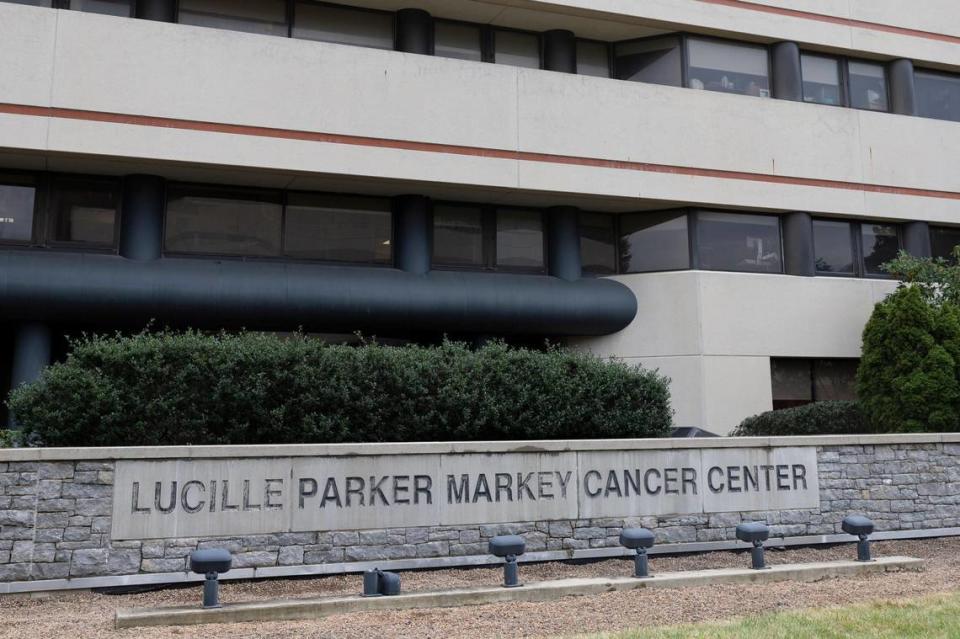How UK is helping lead the discussion on this type of preventable cancer
The University of Kentucky Markey Cancer Center is working to decrease cancer rates linked to Human Papillomavirus, HPV.
By hosting the two-day HPV Cancer Center Consortium this week, UK is helping lead the discussion to promote collaborative HPV cancer research.
At the conference, researchers with the Centers for Disease Control and Prevention, American Cancer Society, National Cancer Institute and leading research universities presented studies related to increasing HPV vaccine rates and stopping the spread of HPV-related cancers.
HPV is the most common sexually transmitted infection in the U.S., and can lead to cancer of the cervix, vagina, vulva, penis, anus and back of throat. Kentucky has the highest rate of HPV-related cancers in the nation, according to the Centers for Disease Control and Prevention.
“We don’t think it’s necessary to mandate vaccines. We think it’s most important to train healthcare providers (and) educate parents so they have the right information so they know how to protect their children from harm,” UK Markey Cancer Center Associate Director of Population Science and Community Impact Pamela Hull said. “You can increase vaccination rates without being required.”

How is the HPV vaccine given? How old can you be to get a shot?
The HPV vaccine is administered as a series. If the first dose of the vaccine is given before a patient’s 15th birthday, only two doses are needed. If the first dose is given after, the shot series is three total injections.
People as young as nine-years-old can get the vaccine, but the CDC does not recommend anyone over 26 years old start the series. The vaccine, approved by the Food and Drug Administration in 2007, has the potential to prevent more than 90% of HPV-related cancers, according to the CDC.
Hull said the vaccine is so effective, HPV related cancers could be eradicated. She said strategies that address HPV vaccination on multiple levels is the next step in expanding vaccine access.
Isabel Scarinci, who attended the conference, organized a social movement in Alabama to wipe-out cervical cancer with the HPV vaccine. Scarinci and her team went into public schools and talked to students about the importance of vaccination and prevention.
She said her team wanted to educate at all levels — teachers, students, parents and staff. With her outreach, Alabama public school students worked to spread the word about HPV vaccination to decrease the state’s rate of cervix cancer. The student-made logo and slogan are now being used by the state health department.
Following Scarinci’s work, the Alabama Department of Public Health adopted a ten year plan to increase the HPV vaccination rate of Alabama children aged nine-12 years-old from 22% to 90% by 2033.
“It’s not research. It’s really social organization,” Scarinci said.
HPV vaccine misinformation
Armed with a vaccine that can prevent cancer, Sarah Kobrin with the National Cancer Institute said HPV-related cancers occupy a unique space in cancer research. As cancer researchers suddenly thrust into a vaccine space, she said collaboration became the pillar of successful research.
The top priority of HPV uptake research in the U.S. is addressing vaccine misinformation, according to a study by Noel Brewer from the University of North Carolina Lineberger Comprehensive Cancer Center.
“Our primary care doctors — those are our pediatricians, our family physicians — they are really key … the research has shown that a doctor giving a strong recommendation for the vaccine is the number one predictor that someone is going to decide to get it,” Hull said. “It’s the number one reason why parents choose to get the vaccine, because we trust our doctors. We trust their recommendations.”


